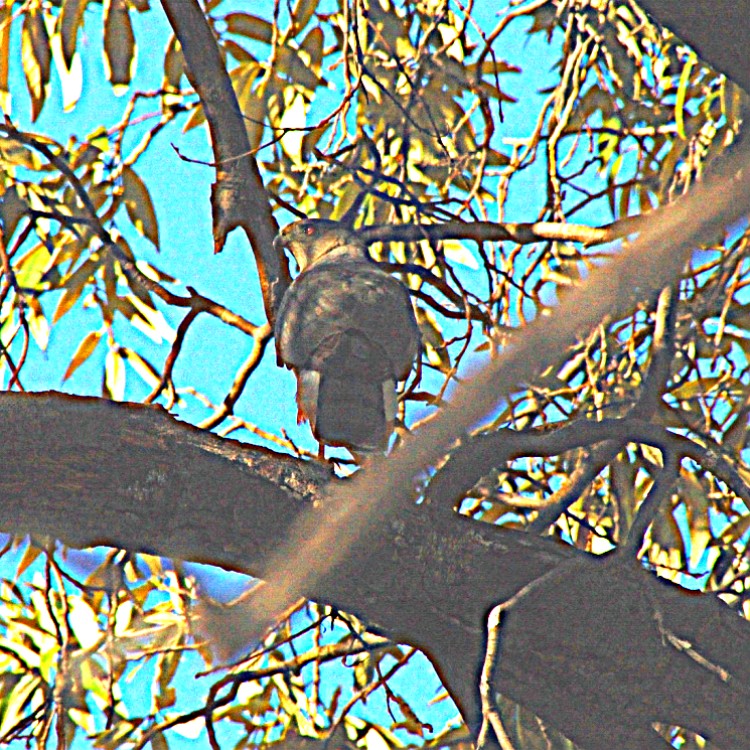
Hawk Index page.
birdfotos.com

Hawk Index page.
Last up dated on; 03/28/09
IMPORTANT NOTICE!
There will be some animations on some of the Hawk pages.
Please wait for all pages to completely load, or you will miss the animations.
Nest Sanitation
The very fragility of nests may be adaptive in forcing many birds to build a new nest every year; nests that do not deteriorate over the winter can harbor potentially lethal numbers of parasites or pathogens that may withstand the cold and await returning nesters. Indeed, despite their appearance as peaceful retreats, nests are often alive with invertebrates feeding on the birds, on the birds' waste products, or on each other. Infestations of parasites (fly maggots, fleas, ticks, and mites) or pathogens (bacteria and fungi) are discouraged by various means. One that is widely used is, of course, removal of the fecal sacs of the young.
Recent work has shown that many birds repeatedly add green leaves or cedar bark with pesticidal properties to their nests. This behavior has been recorded in numerous birds of prey that often reuse old nests (some kites, many hawks, and most eagles) and in some passerines (especially secondary cavity nesters, such as European Starlings and Purple Martins). Interestingly, nuthatches, which are also secondary cavity nesters, ritually smear pine pitch and rub insects around the entrance of their holes instead of adding fresh greenery. Both the pitch and the defensive chemicals of the insects may discourage parasites.
Many birds avoid reusing old nests, even if the nests do not deteriorate over the winter. When heavy parasite infestations do occur, nestling mortality rises, nests may be deserted, and in extreme cases, entire colonies have been known to move to a new location.
Copyright ® 1988 by Paul R. Ehrlich, David S. Dobkin, and Darryl Wheye.
the above taken from: http://www.stanfordalumni.org/birdsite/text/essays/Nest_Sanitation.html
*******************************************************************************************************
Please tell me what this is.

*****************************************************************
Cooper's
What do you mean it's a Gray Hawk??? new photos as of 05/15/03
More new images of the Coopers as of 12/21/05
**Harris' Animations on this one.
Harris' eating breakfast on my swamp cooler one morning.
**Red-tailed Animations on this one.
This is a link to a Leucistic Red Tail Hawk @ http://azfo.org/gallery/red_tailed_hawk_leucistic.html
Zone-tailed 08/14/05 at the Grand Canyon South rim - 08/20/05 more images
Broad-winged Hawk http://www.azfo.org/ArizonaBirdCommittee/broad-wingedhawk.html
Northern Goshawk http://www.birds.cornell.edu/AllAboutBirds/BirdGuide/Northern_Goshawk.html
White-browed Hawk http://wingsbirds.com/tours/view/193
Broad-winged Hawk http://www.azfo.org/ArizonaBirdCommittee/broad-wingedhawk.html
Short-tailed Hawk http://www.azfo.org/ArizonaBirdCommittee/short-tailedhawk.html
Red-shouldered Hawk http://www.azfo.org/ArizonaBirdCommittee/red-shoulderedha.html
Broad-winged Hawk http://www.birds.cornell.edu/AllAboutBirds/BirdGuide/Broad-winged_Hawk.html
Rough-legged Hawk http://www.birds.cornell.edu/AllAboutBirds/BirdGuide/Rough-legged_Hawk.html
White-browed Hawk http://wingsbirds.com/tours/view/193
*******************************************************
You may contact me at birdfotos@aol.com
This web site contains photos of the following.Birds,arizona birds,wild birds of arizona,Hummingbirds, Arizona desert life,flowers plants,trees,cactus,blooms,cicada,locust,frogs,tortoise,snakes,moths, butterflies,wolf,lizard,peccary,javelina,coyote,dinosaur insects,fox,grasshopper,hawks,larks,sparrow, warblers,jays,tanager,wrens,robins,grosbeak,hummingbirds,woodpeckers,verdins,phainopepla,blackbird, bunting,ducks,finch,doves,flycatchers,gnatcatchers,kinglet,oriole,owl,pyrrhuloxia,quail,rail,snipe roadrunner,thrasher,thrush,titmouse,towhee,trogon,vireo,vultures and much more,museum,water,Arizona desert,deserts,mountains,